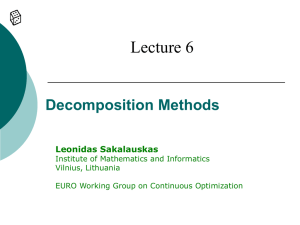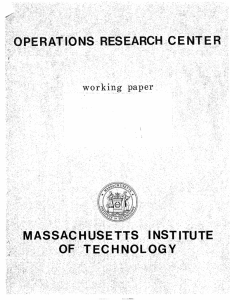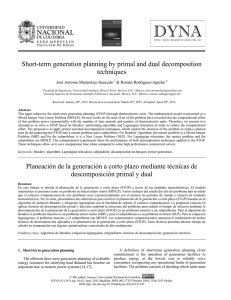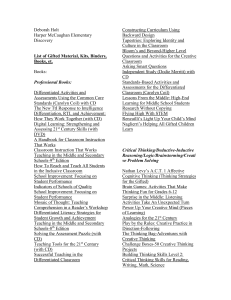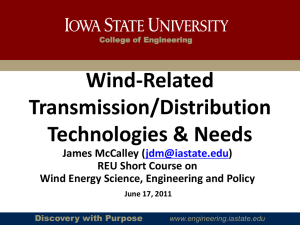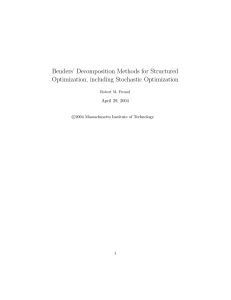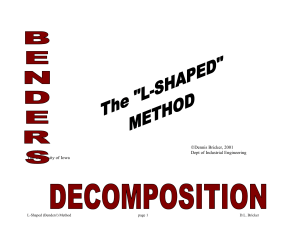PPT
advertisement
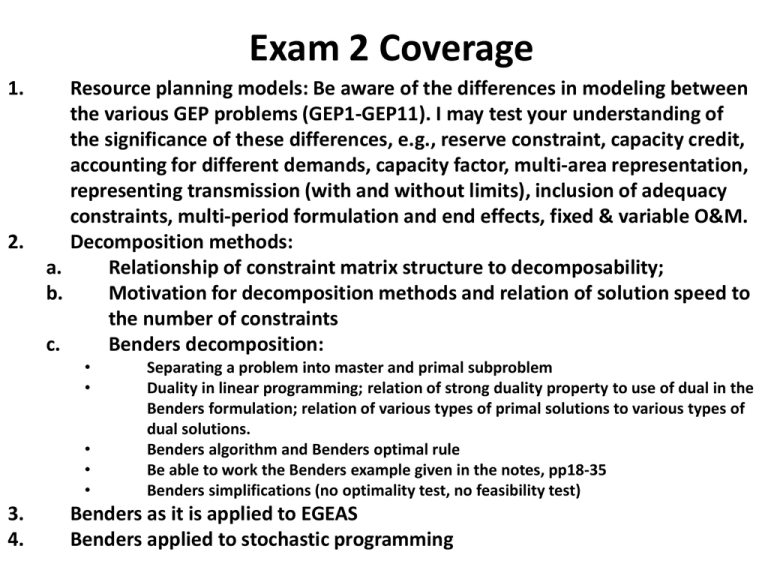
Exam 2 Coverage 1. 2. Resource planning models: Be aware of the differences in modeling between the various GEP problems (GEP1-GEP11). I may test your understanding of the significance of these differences, e.g., reserve constraint, capacity credit, accounting for different demands, capacity factor, multi-area representation, representing transmission (with and without limits), inclusion of adequacy constraints, multi-period formulation and end effects, fixed & variable O&M. Decomposition methods: a. Relationship of constraint matrix structure to decomposability; b. Motivation for decomposition methods and relation of solution speed to the number of constraints c. Benders decomposition: • • • • • 3. 4. Separating a problem into master and primal subproblem Duality in linear programming; relation of strong duality property to use of dual in the Benders formulation; relation of various types of primal solutions to various types of dual solutions. Benders algorithm and Benders optimal rule Be able to work the Benders example given in the notes, pp18-35 Benders simplifications (no optimality test, no feasibility test) Benders as it is applied to EGEAS Benders applied to stochastic programming Exam 2 Coverage 5. a. b. 6. a. b. 7. 8. a. b. c. d. 9. a. b. c. 10. Basic input data for production cost models Load duration curves Generation probability models Reliability calculations Reliability Indices Effective load and convolution Production costing approach using observed load and convolution; relation of EENS to difference between total energy supplied via production cost procedure and total energy demanded via original load duration curve AC transmission line impedance parameters Correction factors and relation to line length Inductance and capacitance reactance relations; use of tables Surge impedance and surge impedance loading Influences on conductor ampacity St. Clair curves How they are computed How to use them Main influences on SIL Underground vs. overhead for AC transmission Exam 2 Coverage 11. a. b. c. d. e. f. 12. a. b. c. d. e. f. 13. a. b. c. d. Other AC transmission technologies: what are the characterizing features and under what conditions do they make sense to use High temperature, low sag conductors High surge impedance loading conductors Compact line design (increased surge impedance lines) High phase order transmission Gas insulated transmission Superconducting transmission HVDC Applications of HVDC Configurations, e.g., monopole, bipole, tripole Rule of 3 Relation between HVDC line design, line cost, and line reliability Influences on breakover distance Comparison between HVDC and EHVAC from Fleeman/Gutman paper Transmission expansion planning “Real” transmission expansion planning vs. TEP optimizatin TEP formulation Why standard TEP formulation is MINP Disjunctive formulation to make TEP MILP Exam 1 Coverage You may work these two problems entirely at home and bring them to the exam. You should NOT collaborate with anyone in working these problems. But you can use any resource you like, e.g., notes or books. 1. This question is to be worked before Exam 2 but turned in with Exam 2. Consider the following circuit from the Dunlop and Gutman paper on loadability. Consider the following problem: Referring to the circuit diagram, Given: R, X, B, X1, X2, θ1, |E2|, |ES| Find: |E1|, θs, |ER|, θR Assume NS=NR=N=0. Provide a solution strategy for solving this problem. You must provide appropriate equations to be solved and you must describe a solution method. You do not need to implement the method. What to study • Do problem 1 • Notes, particularly any examples Nature of exam • Some calculations • Some short answer • Some true-false
